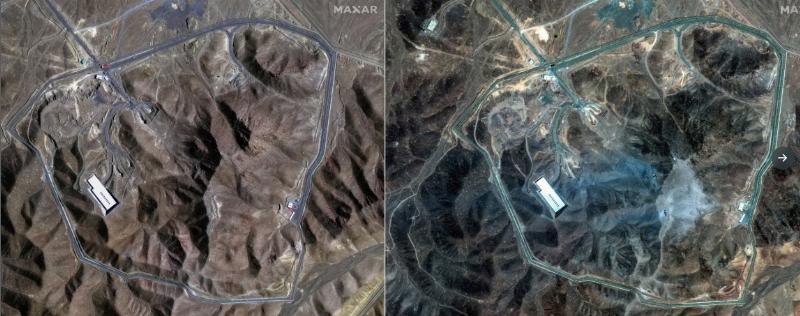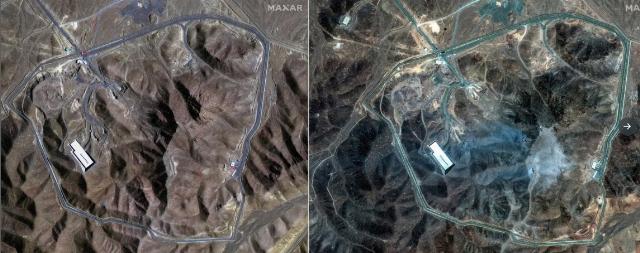


The current joke about the Democrats’ response to the Operation Midnight Hammer raid on Fordow is that, before the raid, the Democrats insisted that there was no imminent nuclear risk from Iran. After the raid, they immediately pivoted to claiming that the raid was so ineffective that Iran would be nuclear in a couple of months. A subset of that latter claim was that, even if the raid took out Fordow, it was pointless because the Iranians cleverly removed all of their almost fully enriched uranium in the days leading up to the raid.
A conservative analyst who writes under the name @amuse says that this last claim is nonsense. In a long X article, he explains why it’s nonsense. I recommend that you read the article, but here’s the quick rundown.

Fordow is not a factory. It’s a two-billion-dollar fortress that has as its purpose “to shelter its enriched uranium.” That being the case, the starting question is why Iran, at its most vulnerable, would remove its valuable enriched uranium from “the one place specifically engineered to protect it.”
Of course—and this is me, Andrea, speaking—the superficial answer would be because Iran knew Fordow would be the target of an attack. But that’s not logical. Iran, based on 46 years of predictable American behavior, almost certainly believed that America would not attack it. It also knew that Israel lacked the bunker buster bombs that could carry out the attack. As far as the mullahs knew, the fortress was secure.
Now, back to @amuse.
What gave rise to the “uranium is gone” theory is that, on June 19 and 20, satellites saw 16 large dump trucks at Fordow. They were big trucks of the type used to haul heavy construction equipment. At the same time, bulldozers were seen installing cement covers over the airshafts. In other words (me again), the Iranians were worried that Israel would send some wicked little thing, some magical Mossad weapon, that, like something out of a Hollywood movie, could destroy the entire facility just by wiggling through the shift.
But the key point, says @amuse, is that these trucks weren’t the special conveyances needed to carry nuclear material. Also, none of them actually drove away from the facility. Instead, they were just parked nearby.
There is no visual evidence of loading, no convoy, no escort vehicles, no attempt to obscure or evade. In short, there is no movement that even faintly resembles a uranium exfiltration.
In other words, while the concrete placement could have been a feint to make people think the Iranians were protecting existing uranium stores, the trucks weren’t transporting the uranium.
Most importantly, moving enriched uranium is an undertaking that extends far beyond having the right kind of truck:
Iran is believed to have had approximately 900 kilograms of uranium enriched to 60 percent at Fordow. That quantity, in powder form, must be stabilized into uranium oxide and then sealed into thirty separate Type B(U) containers. Each container stands four feet tall, nearly two feet wide, and weighs between 1,100 and 1,760 pounds. These are not tossed in the back of a truck like crates of fruit. They require fixed cradles, meticulous spacing of at least three to four feet to avoid criticality risks, and strict handling by trained nuclear engineers and radiation safety officers. Criticality risk arises when excessive fissile material, like enriched uranium, is placed too closely together under certain configurations, such that it could support a self-sustaining nuclear chain reaction. Even though each container is subcritical on its own, improper spacing or environmental conditions could elevate the risk. Therefore, these containers must be spaced deliberately and isolated by materials designed to absorb or block neutrons, ensuring absolute containment and safety.
Even in ideal conditions, the logistics are Herculean.
The uranium containers would have to be transported from 2,500 feet underground up to the surface. Then, the containers would need to be loaded onto special conveyances. All this would require around two dozen people and a lot of equipment. But no one and nothing were observed.
The same media that went from insisting that Iran was harmless to saying “You missed! Now it’s a killer,” is almost certainly wrong when it contends that, even if the U.S. didn’t miss, the whole exercise was pointless. But then, that’s par for the course for the American media. Its members have no interest in facts. The media are a propaganda collective intent solely on undermining the Trump administration.
By the way, as an aside, so many people were comparing the raid to Top Gun: Maverick, the 2022 Tom Cruise movie, that I went back to see the movie. I’d seen it when it first came out, and enjoyed it, but I’d forgotten most of it. It really is weirdly apropos in terms of the bombing raid, right down to dropping massive missiles into air shafts at an enemy uranium enrichment facility.
